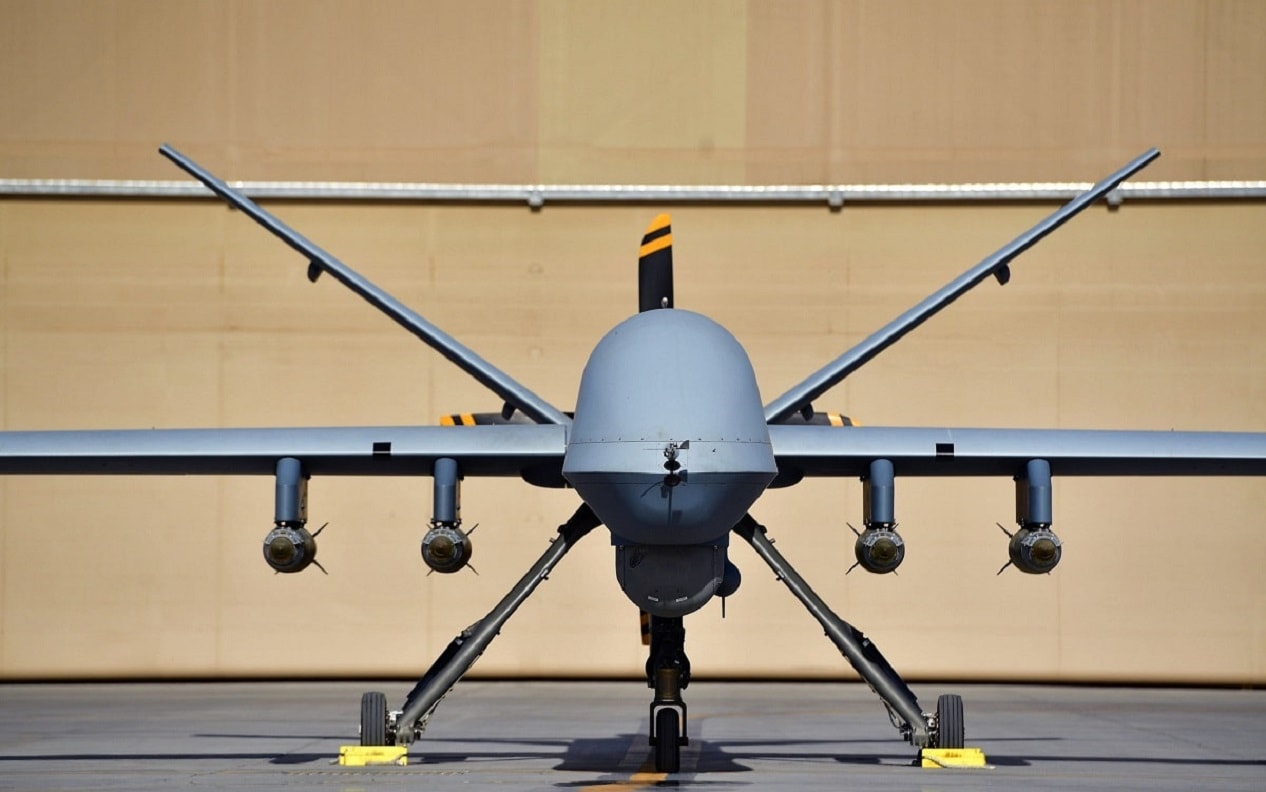For the first time ever, the U.S. Air Force deployed an MQ-9 Reaper drone from Hawaii to Guam to test a countermeasure in the event of a Chinese attack on its airbases.
The remotely piloted aircraft flew from Kaneohe Bay in Hawaii to Andersen Air Force Base, a distance of almost 4,000 miles, in support of Exercise Ace Reaper.
Ace Reaper
With Ace Reaper, the Air Force wanted to see how quickly it could get MQ-9 Reapers into the theater of operations and have them execute sustained missions.
The MQ-9 can carry a diverse set of sensors and missiles and can conduct precision strikes, close air support, and intelligence, surveillance, and reconnaissance (ISR).
“While we were at MCBH, the ACE team conducted three rapid refuels utilizing only five multi-capable Airmen who were proficient between weapons, aircraft maintenance, and ommunications. The current standard time to regenerate a sortie is typically three hours; our average time was 20 minutes,” Lieutenant Colonel Michael Chmielewski, the commanding officer of the 556th Test and Evaluation Squadron, said in a press release.
Following the MQ-9 Reaper was a team of maintainers. Once on the ground, the team was able to regenerate another sortie. The entire logistical footprint was very small, comprising seven Airmen and half a pallet of equipment, which translated into a reduction of 90 percent in maintenance power, 95 percent in maintenance equipment, and 100 percent in launch and recovery equipment. However, some logistical support was already in place, which suggests that the Air Force would have to invest in the forward operating bases.
“From our perspective, it was a trial run and data collecting event for our supplement to the Pacific Air Forces ACE concept of employment (CONEMP) to assess how the MQ-9 will execute hub and spoke operations. The hub for this exercise was Kaneohe Bay, Hawaii and the spoke AAFB [Guam]. We set out to assess our planned lean logistics footprint, quick turn procedures, and auto takeoff and land capability, as well as bring the Multi-Capable Airman (MCA) mentality into the MQ-9 community,” Chmielewski added.
Ace Reaper was a combined exercise involving two wings (432nd Wing and 49th Wing) and one squadron (556th Test and Evaluation Squadron).
“Without the enduring support from the 432nd Wing and 49th Wing in the overall exercise, this never would have been a reality. From maintenance to communications to operations, our team did a phenomenal job across the spectrum to innovate new tactics from existing capabilities on a near-impossible timeline to make this happen and start validating the MQ-9’s ability to be agile,” Chmielewski added.
The ACE Concept
The Air Force has been increasingly testing, developing, and investing in the Agile Combat Employment (ACE) concept. In a near-peer operational environment, U.S. airbases would be targeted by the adversary, and China and Russia have the long fires capabilities to strike those airbases, especially ones outside the continental U.S., such as Guam, and inflict serious damage. Under the ACE concept, the Air Force and Marine Corps would be able to avoid a surprise, first strike by dispersing in smaller—even impromptu ones—airfields in the area.
The Air Force has tested and validated the F-35 Lightning II and F-22 Raptor for ACE deployments.
1945’s New Defense and National Security Columnist, Stavros Atlamazoglou is a defense journalist specializing in special operations, a Hellenic Army veteran (national service with the 575th Marine Battalion and Army HQ), and a Johns Hopkins University graduate.

